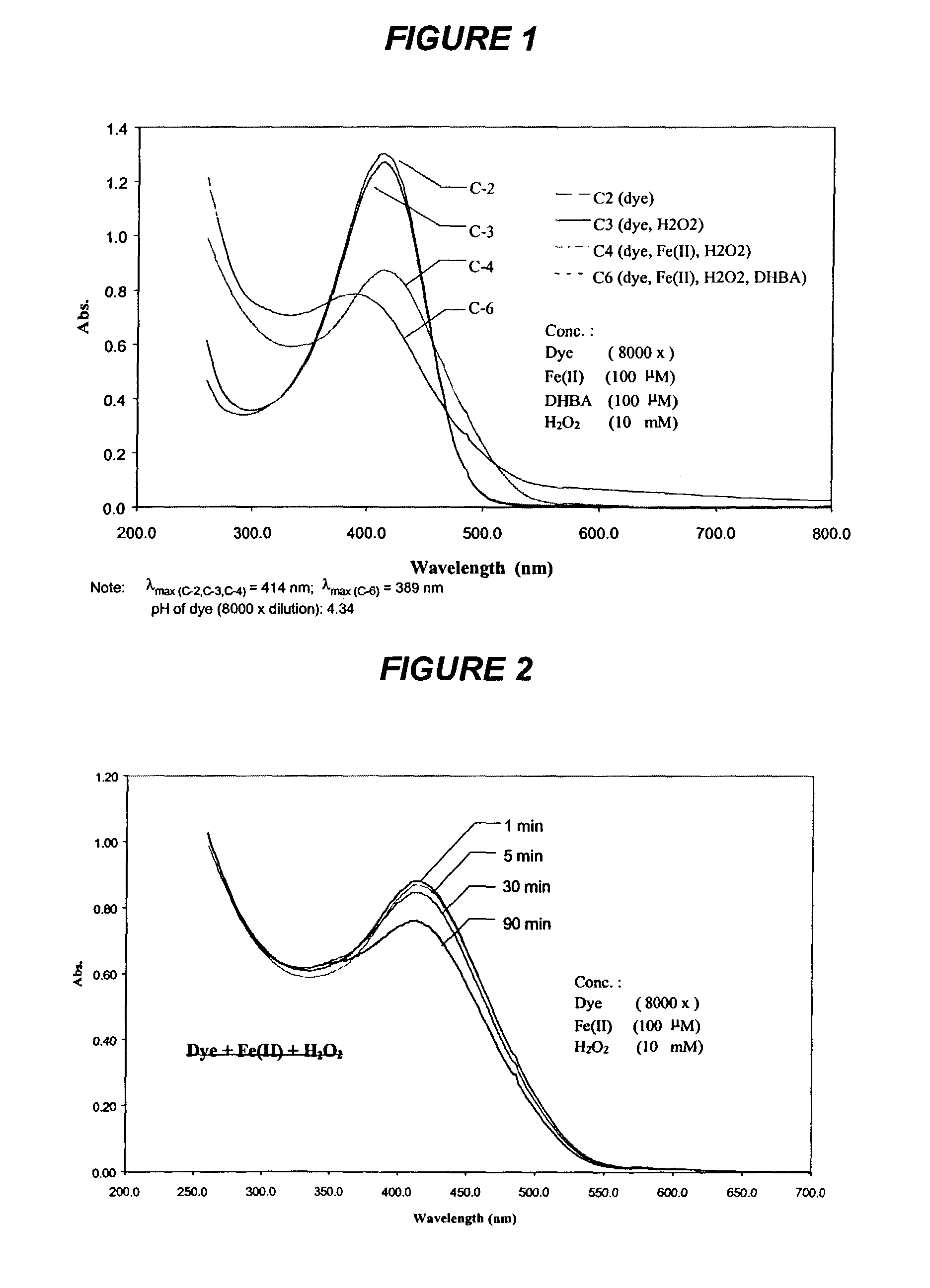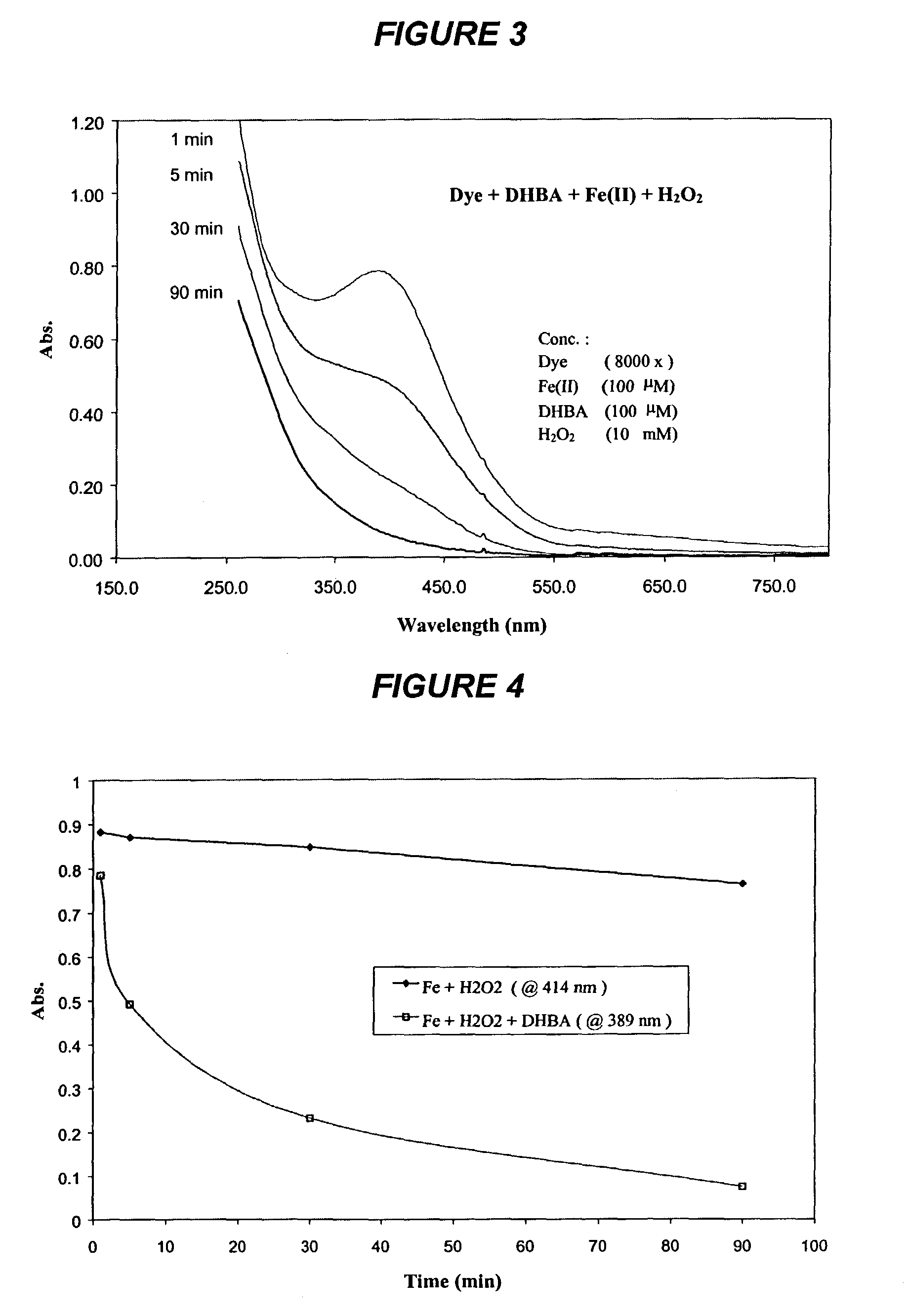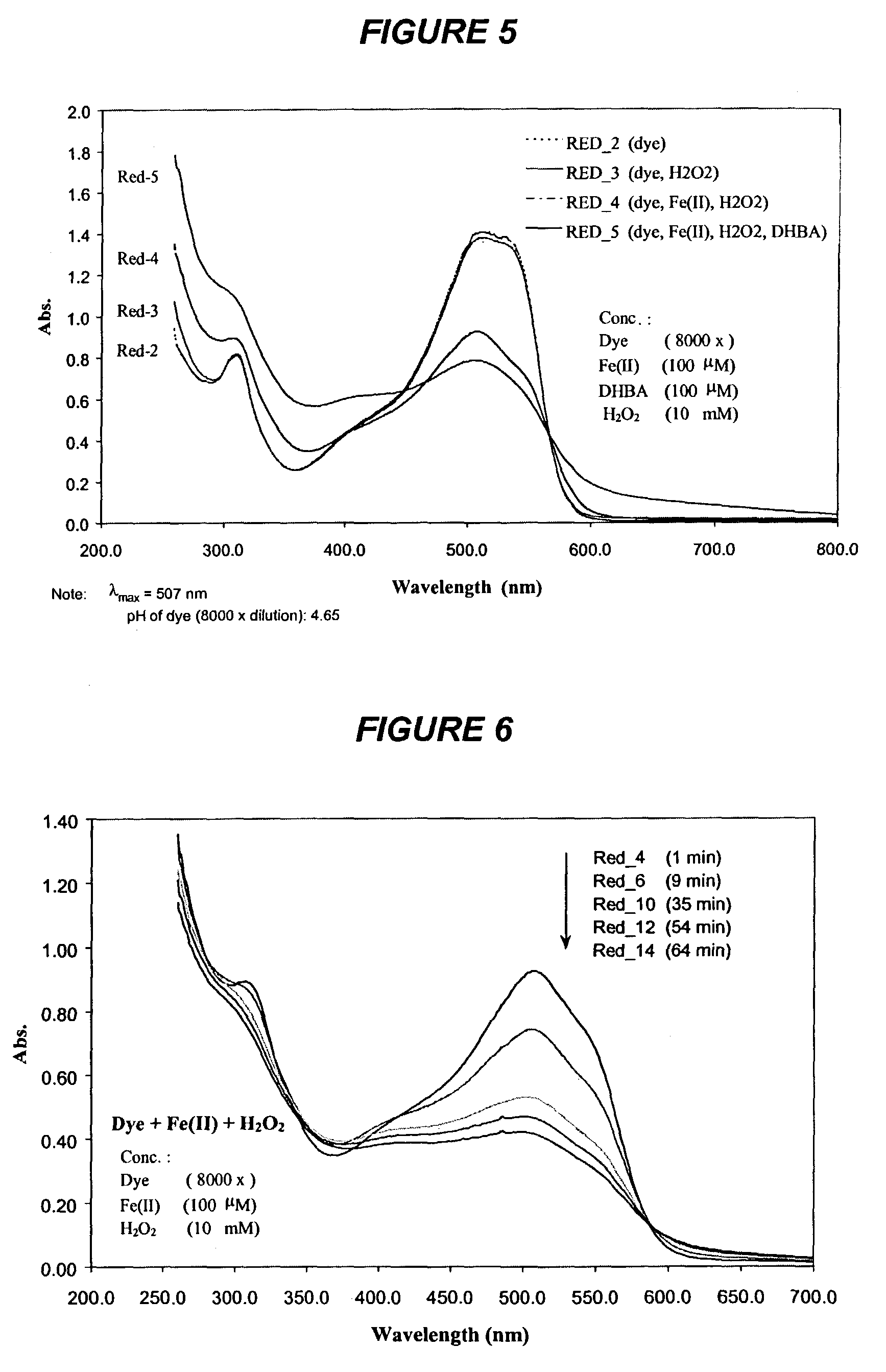Oxidation using a non-enzymatic free radical system mediated by redox cycling chelators
a free radical system and oxidation technology, applied in the field of non-enzymatic method of oxidizing organic compounds mediated by a redox cyclingchelator system, can solve the problems of limited application of hydroxyl radicals produced by fenton reactions, and achieve the effect of efficient activation of organic materials
- Summary
- Abstract
- Description
- Claims
- Application Information
AI Technical Summary
Benefits of technology
Problems solved by technology
Method used
Image
Examples
example i
[0153]Example I describes a method of forming softwood fiberboard using a non-enzymatic lignocellulosic material oxidizing system through a wet-process technique.
1.1. Materials
[0154]Thermomechanically pulped Pinus ponderosa wood fibers with a small percentage Abies concolor were used in this study. The defibration process involved 0.55 MPa and 140° C. in a steam digester applied to wood chips, shavings, and sawdust followed by Bower double disk refining at pressures >0.55 MPa. The wood fibers were at a moisture content of 9-11% during fiberboard processing. A model chelator, functionally and structurally similar to the natural chelators produced by G. trabeum, 2,3-dihydroxybenzoic acid (DHBA) (Goodell et al., J. Biotech., 53:133-162 (1997)), was used in this study for the bonding reactions with ferric (anhydrous ferric chloride) or ferrous (ferrous sulfate hexahydrate) iron (Aldrich Chemical Company). Hydrogen peroxide 30% w / w (Alfa Aesar Chemical Company) was used as the reactive o...
example ii
[0164]Example II describes a method of forming softwood fiberboard using a non-enzymatic lignocellulosic material oxidizing system employing a dry-process technique.
2.1. Materials
[0165]All materials used in this study were identical to the materials used in Example I.
2.2. Methods
[0166]Softwood fiber (100 g) was placed in the liquids-solids blender and the chemicals were atomized onto the fibers following the experimental design shown in Table 3. After the treatment of wood fibers with 2,3-dihydroxybenzoic acid (DHBA), ferric chloride (Fe(III)), and acetate buffer hydrogen peroxide was added. The pH of the furnish was maintained around pH 4.5 by measuring spot samples, and in most cases pH adjustment was not necessary. Fibers were thoroughly mixed for one minute in the blender, and then for an additional minute after hydrogen peroxide addition. Following treatments with the necessary oxidizing reagents, the addition of DHBA to the iron would change the fibers purple to dark brown in ...
example iii
[0180]Example III describes a method of degrading chemical dyes using a non-enzymatic dye oxidizing system.
3.1. Materials
[0181]Four liquid dyes from Clariant (Charlotte, N.C.) were used in this preliminary study. The trade names of the dyes used were Carta Yellow RW liquid (Stilbene type), Carta Yellow G liquid (Stilbene type), Cartasol Red 2GF liquid (Azo type), and Cartasol Turquoise K-RL liquid. Ferrous Sulfate Heptahydrate was used as iron source, which was purchased from Sigma (St Louis, Mo.). Hydrogen peroxide (30% w / w) and 2,3-dihydroxybenzoic acid (DHBA) were purchased from Aldrich (Milwaukee, Wis.). All the stock solutions were prepared from deionized water and the chemicals used without further purification.
3.2. Methods
[0182]Experiments were carried out at room temperature (23° C.) in the dark. The reaction mixtures contained 0.125 g / l liquid dye (8000× dilution), 100 μM Fe(II), 100 μM DHBA, and 10 mM H2O2 in a final volume of 2 ml, unless otherwise noted. The pH value of ...
PUM
| Property | Measurement | Unit |
|---|---|---|
| Fraction | aaaaa | aaaaa |
| Fraction | aaaaa | aaaaa |
| Length | aaaaa | aaaaa |
Abstract
Description
Claims
Application Information
 Login to View More
Login to View More - R&D
- Intellectual Property
- Life Sciences
- Materials
- Tech Scout
- Unparalleled Data Quality
- Higher Quality Content
- 60% Fewer Hallucinations
Browse by: Latest US Patents, China's latest patents, Technical Efficacy Thesaurus, Application Domain, Technology Topic, Popular Technical Reports.
© 2025 PatSnap. All rights reserved.Legal|Privacy policy|Modern Slavery Act Transparency Statement|Sitemap|About US| Contact US: help@patsnap.com



